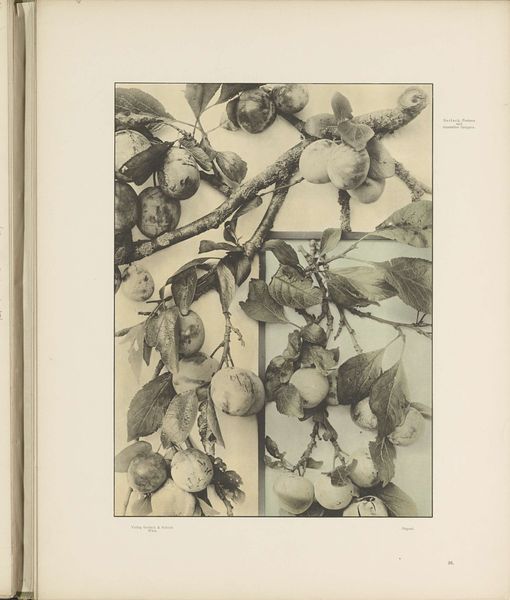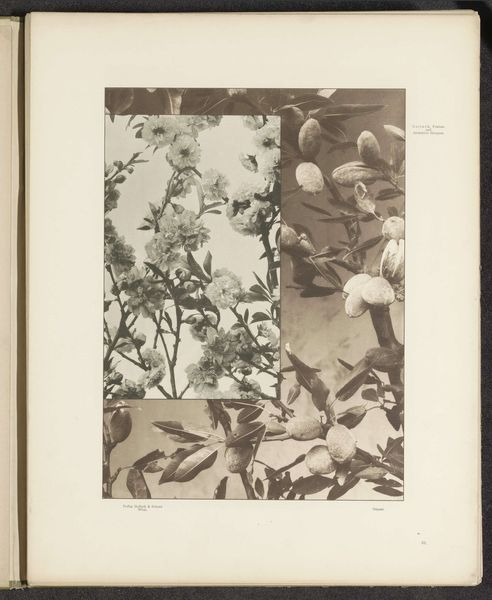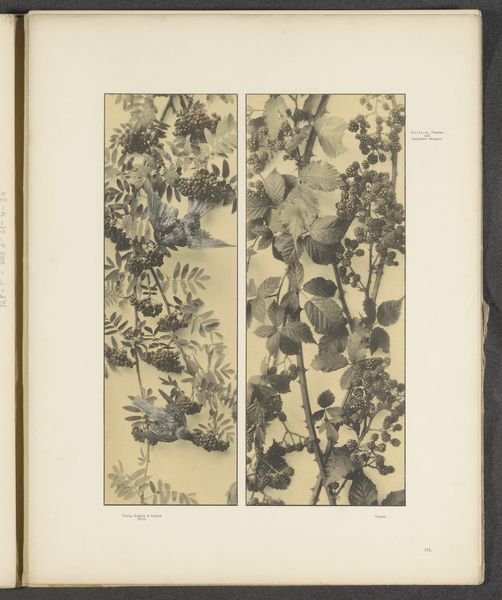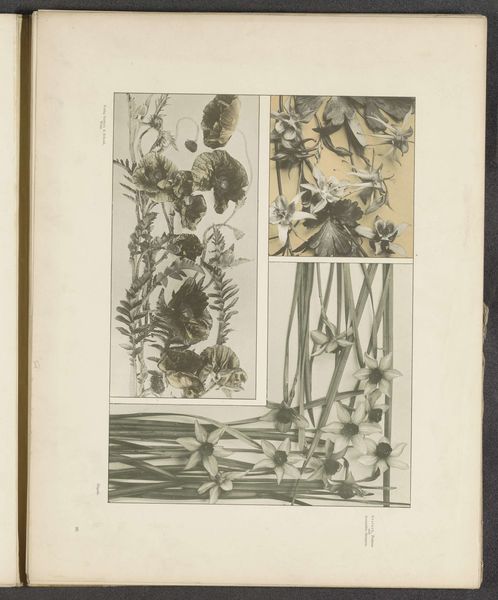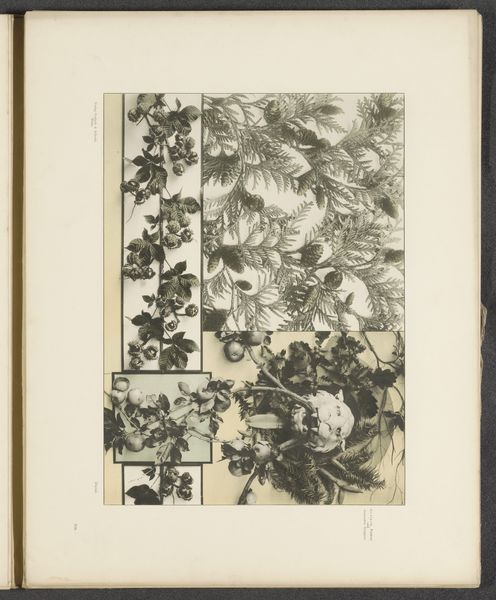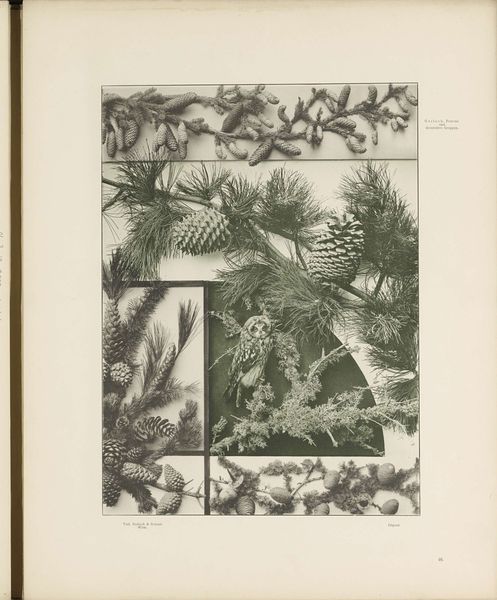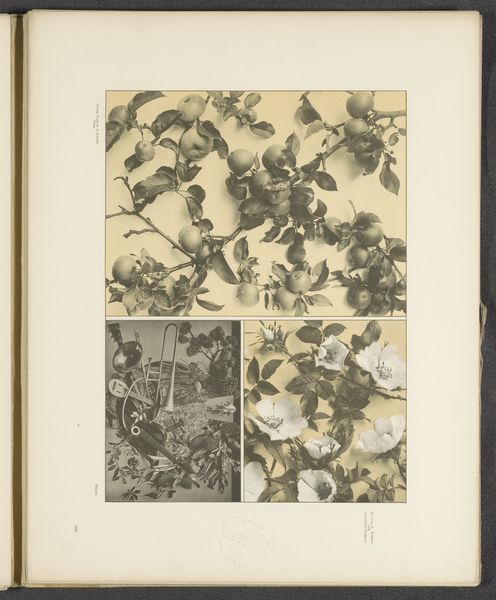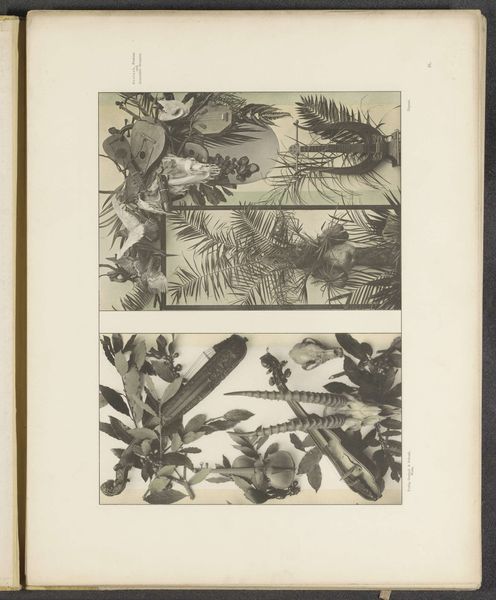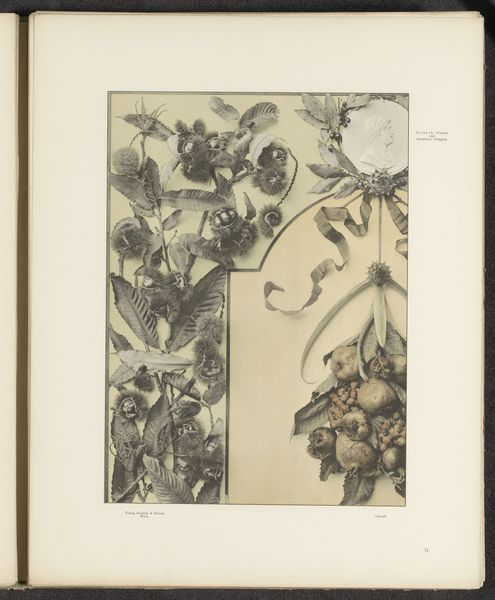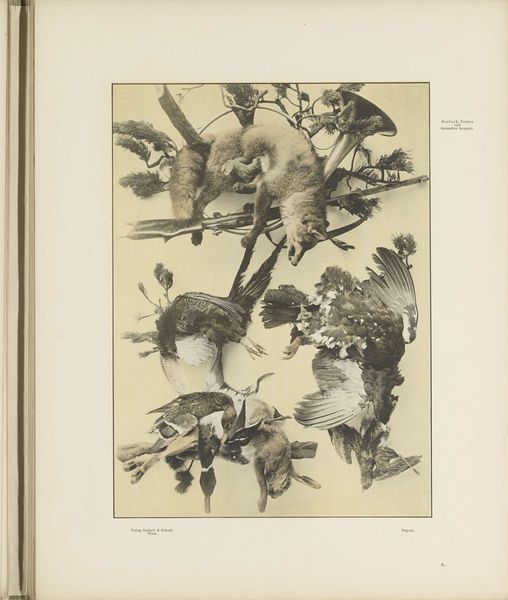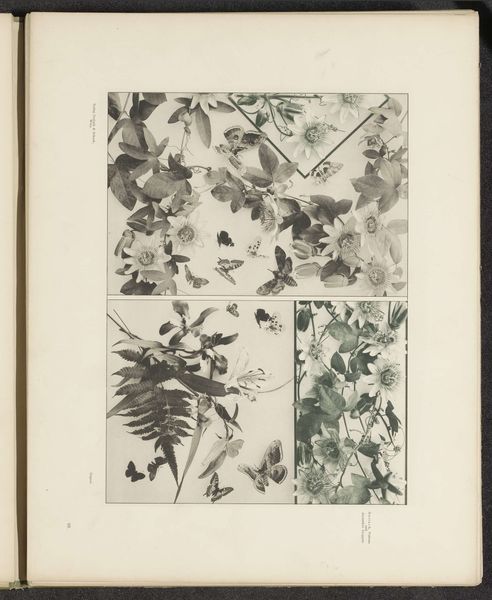
Dimensions: height 293 mm, width 214 mm
Copyright: Rijks Museum: Open Domain
Editor: This is a watercolor painting from before 1897 titled "Vlakken met rozen, artisjokken, kokosnoot en een schilderspalet," or "Squares with roses, artichokes, coconut and a painter's palette." I find the still life intriguing; the palette suggests something about the artist's intention. How do you interpret this work? Curator: What strikes me is how this arrangement transcends mere decoration; it's an assertion of power dynamics present even within domestic settings. Given the prevalence of still life works in a historical moment where women had limited spaces of authority, do you not read the insistence on roses, fruit, and the instruments for creating art, as not just a pleasing decoration? Consider them, perhaps, an assertion of presence, maybe a demand to be seen, heard, and considered? Editor: That's an interesting idea. I hadn't considered the setting. How does the palette factor into that reading? Curator: It becomes the key, doesn't it? This painting uses what are regarded as conventional, domestic imagery - fruits, flora - and lays it on top of the working, artistic equipment. It feels radical when viewed with this contextual information. Who gets to create? Who is granted authorship? It seems a subtle commentary on the social barriers blocking female artists, even while they were relegated to so-called feminine subjects. It makes the everyday, quietly subversive. Editor: I didn't see it that way at first, but now that I look at it, it’s like the artist is saying, “This is my space, my work, my voice.” Thank you for opening my eyes to the different contexts around what it means to be a woman artist. Curator: Exactly. And this kind of reframing—interrogating the space for meaning, for politics—that is what art history must provide us with.
Comments
No comments
Be the first to comment and join the conversation on the ultimate creative platform.
